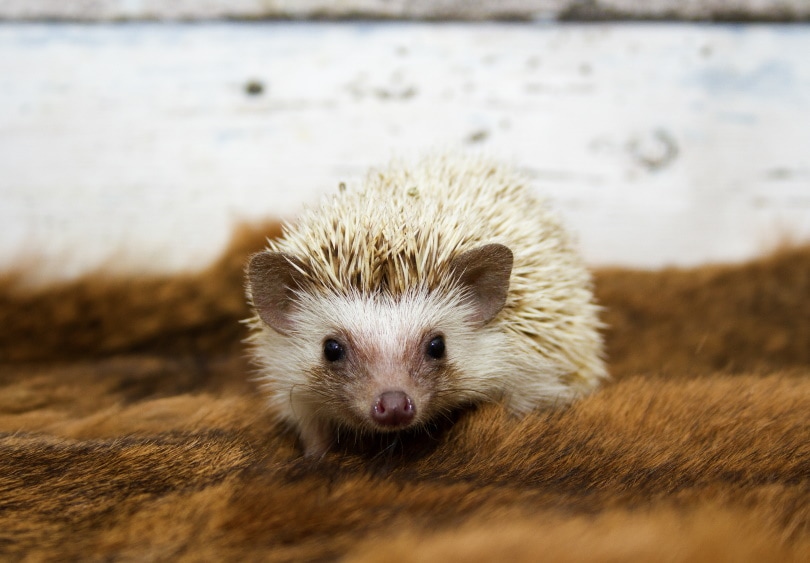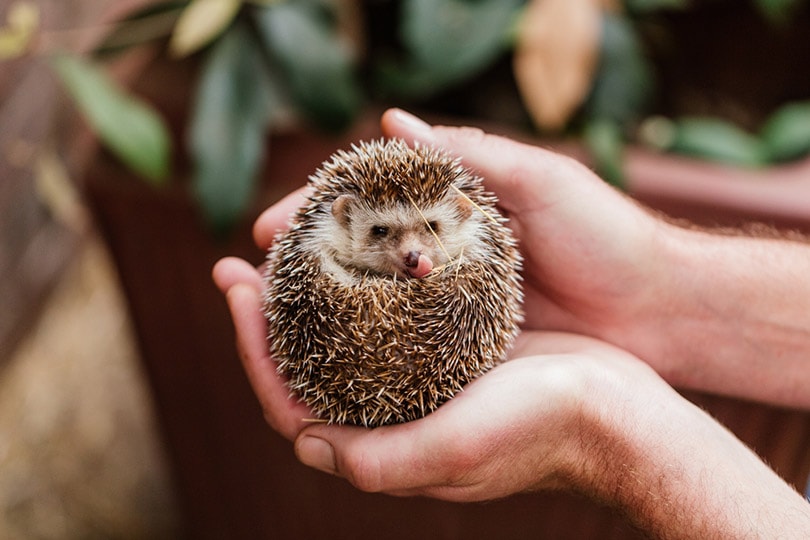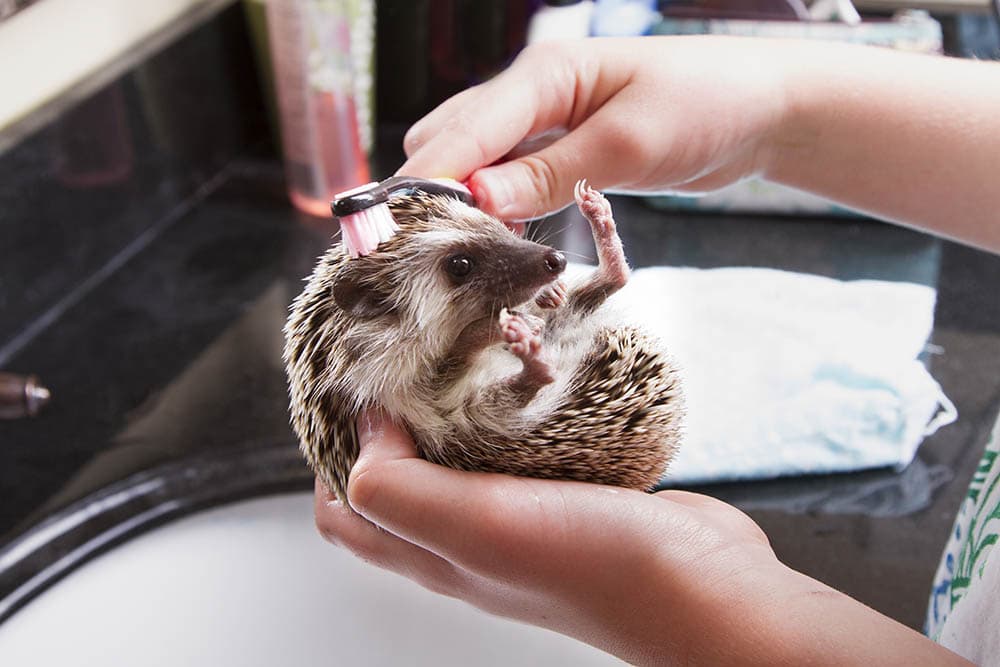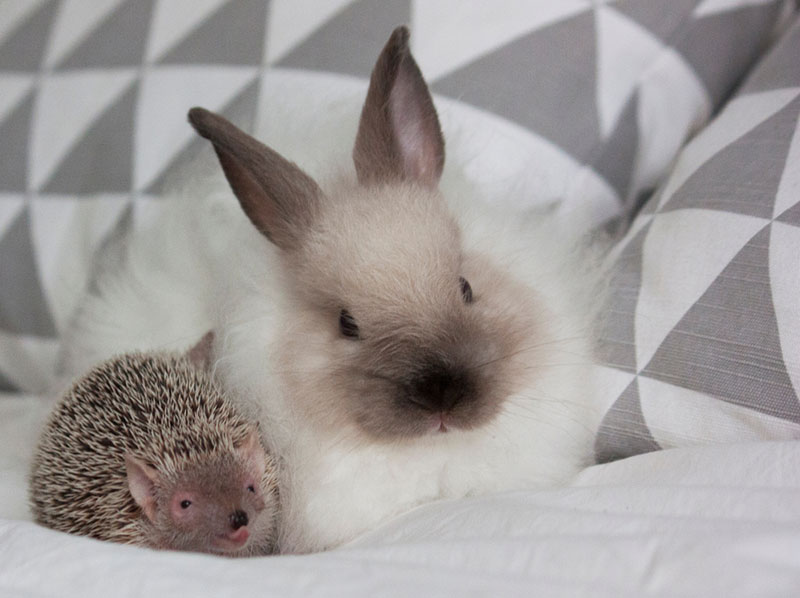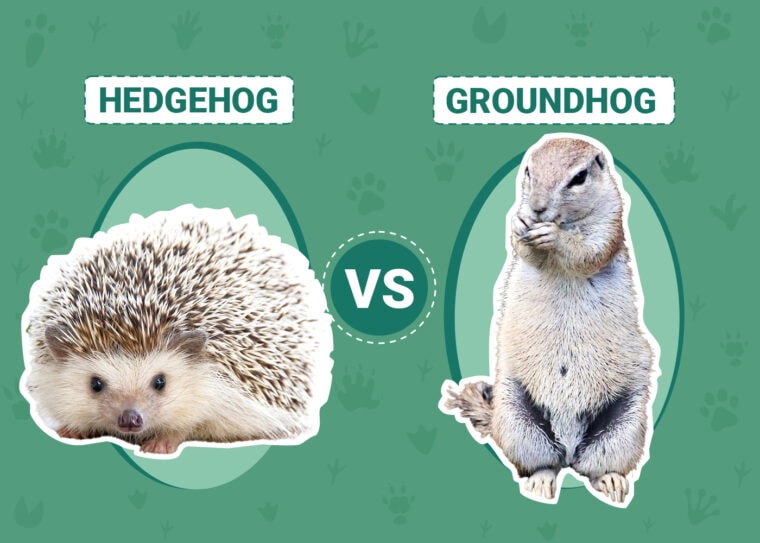
Click to Skip Ahead
There’s no doubt that hedgehogs and groundhogs are both cute as can be. But have you ever wondered what the differences are between the two? Can you own either one as a pet?
Hedgehogs and groundhogs are two very different creatures from two very different backgrounds. They both have the word “hog” in their name, but they vary in size, diet, and lifespan. One of them is a star once a year; all eyes are on the groundhog in February when we want to determine if we’ll have six more weeks of winter. As far as the hedgehog, well, we can’t tell much about the weather from that spiny little critter. But did you know these two have a few similarities?
In this article, we’ll explore the differences and similarities of these fascinating creatures. Some facts about the two may surprise you, so let’s dive in.
Visual Differences

At a Glance
Hedgehog Overview

Physical Characteristics & Appearance
Hedgehogs are small, spiny mammals that are part of the subfamily Erinaceinae. They have a cone-shaped face and a short body covered in quills, similar to a porcupine. Even though they resemble porcupines, they are not related to one another. The quills on their backs are modified hairs made of keratin, which is what our fingernails and hair are made of. Think of their appearance as a sort of pincushion.
The hedgehog is much smaller than the groundhog and can be found in Asia, Africa, Europe, and New Zealand. They are usually white, light brown, or black, and some have brown or black masks across the eyes. Similar to the groundhog, they have small yet powerful legs. They have big feet with five toes on each foot and curved claws for digging, which they are exceptionally good at. They also have very long tongues, and there’s a reason, which we’ll explain in a bit.

Behavioral Characteristics
When the hedgehog is threatened, it will curl up into a ball to ward off predators. They usually have anywhere from 3,000 to 5,000 quills on their body, and when threatened, they raise the quills upright before tucking their head, legs, and tail into a ball. It’s quite the defense mechanism, as it makes it impossible for predators to open the spiny ball. Their quills don’t leave their body like porcupines, but they are sharp. If you ever want to hold one, you probably will want to wear gloves and use a towel to lay the hedgehog on before proceeding.
Unlike groundhogs, they are nocturnal, meaning they are active at night and can sleep up to 18 hours a day. They also are known to “self-anoint,” which essentially means they cover themselves in spit. This strange behavior explains the use of their long tongues. It’s not 100% known why they do this, but some experts speculate that they want to smell similar to an object they like. Or it could be for protection. They will lick the object, and their saliva creates a foam that they can lick all over their bodies. We should note that this behavior is completely normal.
Like groundhogs, hedgehogs hibernate in winter, usually from late October/November to March/April. Their body temperature drops, and they live off of fat built up during the warm months.

Groundhog Overview

Physical Characteristics & Appearance
The groundhog, also known as a woodchuck, is among 14 species of marmot. They are considered rodents and part of the Sciuridae family, making them closely related to the squirrel. They are found in the continental United States and some areas of Canada. The average weight of the groundhog is 13 pounds, and they have upper and lower incisors that grow 1.6 millimeters (sixteenth of an inch) per week in warm months. Their colors range from black to yellowish-brown fur or reddish-brown and gray fur. They have bushy tails, short, powerful limbs, and thick claws. Their thick, sharp claws and powerful limbs allow them to climb trees to escape predators, and they can also swim. They have small ears and black eyes.
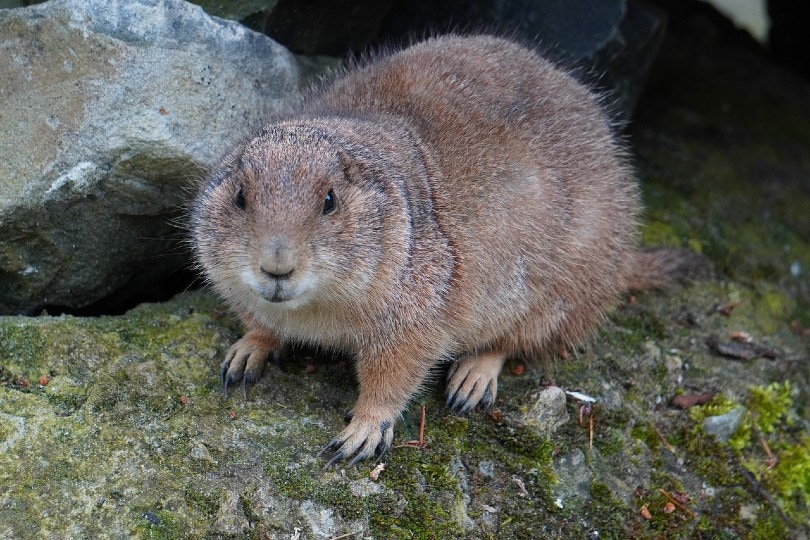
Behavioral Characteristics
Groundhogs are one of the few true hibernators, typically hibernating for 3 to 4 months. Before they hibernate in the winter, their metabolism slows, allowing them to store fat. They’ll also fatten themselves up during the warm months in preparation for hibernation. While hibernating, their body temperature drops from 99 degrees to 37 degrees, and their heart rate drops from 80 beats per minute to a low 5 beats per minute. During this time, they will sleep until it’s time to crawl back above ground.
Groundhogs are diurnal, meaning they are active during the day, which is the opposite of hedgehogs. They are most active around dusk and dawn. During the warm months, they build impressive underground burrows. As far as defecating, they actually defecate in toilet chambers underground. Pretty amazing, huh?

What Are the Differences Between Hedgehogs & Groundhogs?
Can You Own A Groundhog?
Groundhogs are considered rodents, and you can’t own one legally in most states, as they are not considered domesticated. If you were interested in having one for a pet, you’d need a special permit within your state (if it allows it). Even if you had one as a pet, it would be almost impossible to keep inside a cage because they would gnaw with those gigantic incisors to escape.
Groundhog Diet
Groundhogs are herbivores, meaning they eat vegetation. Their diet consists of plants, grass, fruits, and tree bark. They’re considered a pest because they will destroy a garden in a heartbeat, depriving you of whatever you have grown. They may eat an insect or two, as well.

Groundhog Day
We’ve thrown a bit of history in here, just for fun. Almost everyone knows the story of Punxsutawney Phil, and it’s quite a legend with mixed reviews. Every February 2 in Punxsutawney, Pennsylvania, Phil is called upon to indicate if we’ll have six more weeks of winter. During the ceremony, Phil emerges from his temporary home, named Gobbler’s Knob. According to tradition, if he sees his shadow and retreats back to his home, then we’ll see six more weeks of winter weather. While a cute little fellow, we must note that he’s only been correct about 36% of the time.
Can You Own A Hedgehog?
Now onto hedgehogs. These animals are considered domesticated in most parts of the United States, but like groundhogs, they are not legal in every single state. In California, hedgehogs and groundhogs are considered rodents and are illegal to own. In New Jersey and Wisconsin, you may need a permit to own a hedgehog.
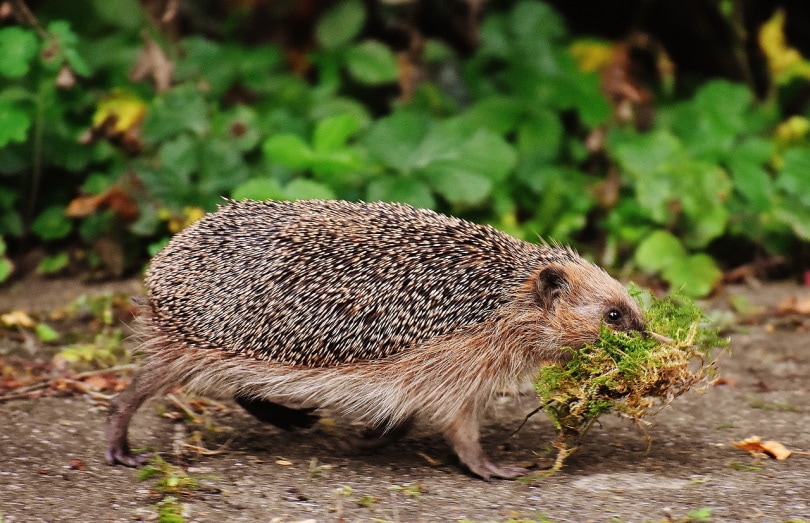
Hedgehog Diet
Hedgehogs are omnivores, which means they like both plants and animals. They also love tasty insects. If you have a pet hedgehog, you can give them fruits and vegetables as an occasional treat, but be careful to investigate what’s safe and what’s toxic.
Final Thoughts
Surprisingly, even though they come from two different worlds, hedgehogs and groundhogs have some similarities. They both hibernate, they both have powerful legs, and they are both illegal to own in California. Another similarity is they both like to eat insects on occasion.
These critters have some remarkable characteristics, and we hope you’ve enjoyed reading about these amazing creatures. Maybe you’ve even learned something that could be a fantastic conversation starter!
- Related read: Do Groundhogs Attack Chickens? How to Protect Your Flock
Featured Image Credit: Top: Hedgehog, Best dog photo, Shutterstock | Buttom: Groundhog, M. Maggs, Pixabay

